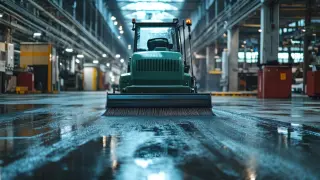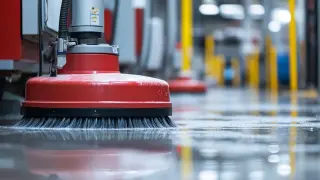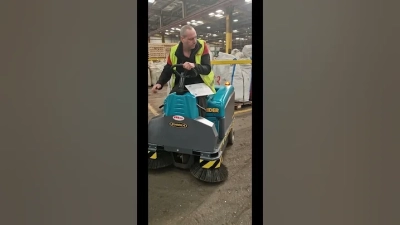Leave Your Message
By all accounts, the surge in demand for cleaning machines across the world, especially Vacuum Sweepers, can be attributed to technological advancement and the importance placed on environmental sustainability. The Grand View Research report on commercial floor cleaning equipment states that the global market is set to reach USD 6.5 billion by 2025, and Vacuum Sweepers are one of the foremost contributors to this growth. This clearly indicates the necessity for effective cleaning products to create and maintain safe environments ranging from retail to large industrial areas.
Anhui Shuojie Environmental Equipment Co., Ltd., therefore, stands firm at the crest of this budding landscape. The company designs innovative cleaning and environmental protection equipment. The company manufactures quality commercial floor scrubbers, sweepers, and vacuum cleaners to respond to the increasing need for cleaning solutions. As urbanization continues to grow and more businesses are paying attention to cleanliness and safety, Vacuum Sweepers will have a growing role in global procurement, an evolution that pushes Anhui Shuojie and other such companies to innovate and adapt through the dynamics of the market.

In the vacuum sweeper market, new technologies and innovations create challenges and opportunities for the industry. Manufacturers are developing advanced technologies that enhance cleaning efficiency while minimizing environmental impacts in response to consumers' growing concerns for sustainability. Recently, several companies made headlines regarding their commitment to recycling materials into their products; for example, Grundig is promoting plastic waste reduction with its new assortment of household appliances, thereby reinforcing the trend in green manufacturing. The 2022 CES, for example, showed the sweeping technological innovations in cleaning that included AI-powered vacuums operating in varying conditions. Versatile home cleaning gadgets were presented by brands like Ecovacs that catered to different scenarios-from cleaning windows to floor care-with a sellable trend towards integrated smart cleaning systems. As competition intensifies, the integration of AI and smart connectivity helps vacuum sweepers to optimize performance and user experience, thereby becoming an inseparable utility in modern households. Sustainability is affecting companies' approach towards the utilization of new materials and designs in keeping with the green building initiative. The construction industry, being one with high relation to carbon emissions, is a key area of innovation being led by environmental stewardship. Vacuum sweeper manufacturers are likely to play in this space as they develop products for cleaning needs that meet the rising market demands yet reflect eco-sense values, thus creating a future where efficiency is synonymous with sustainability.
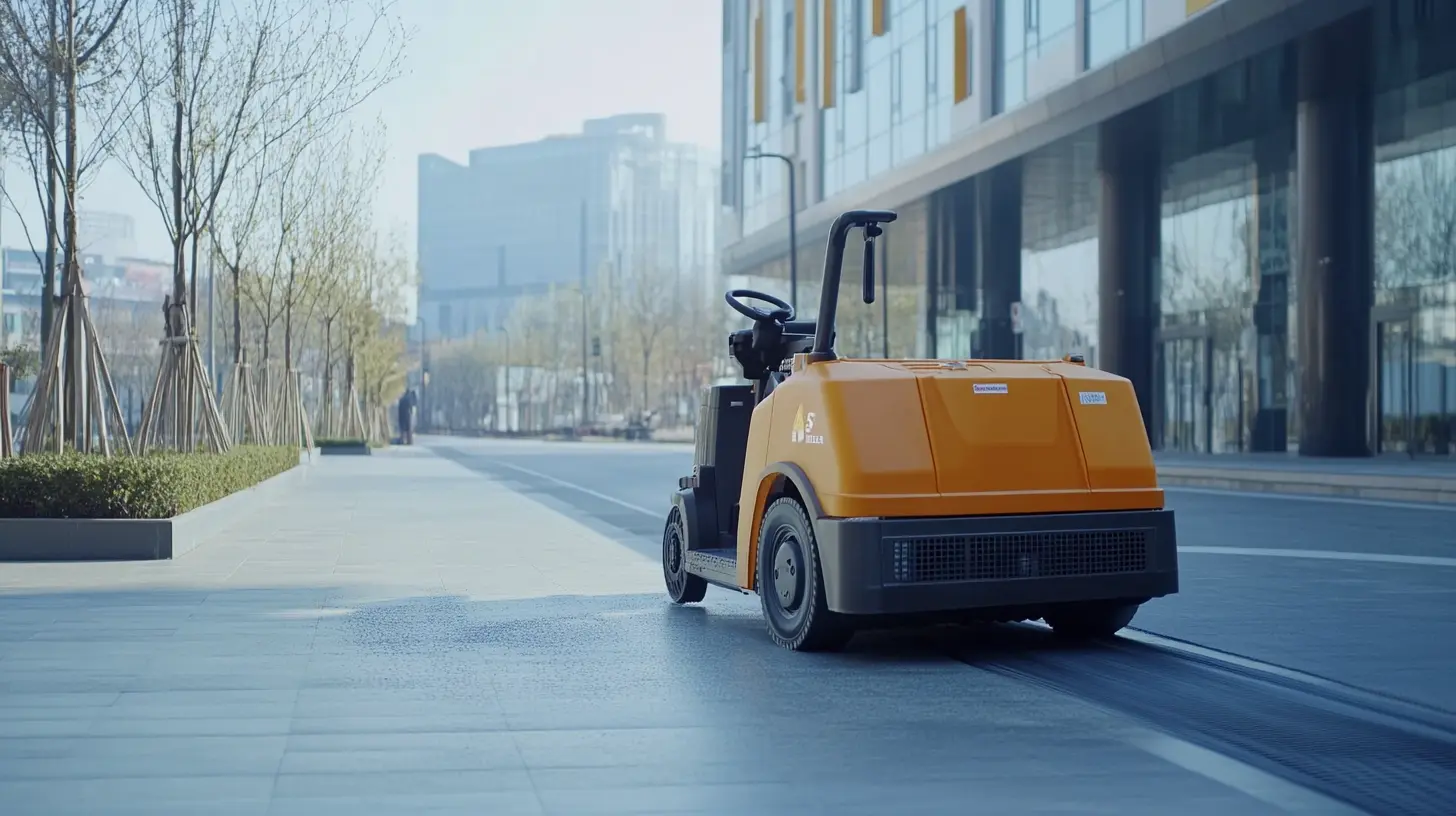
In more recent times, the global procurement landscape has undergone tremendous transformations due to increasing demand for innovation in technology in areas such as minimally invasive surgery and retail. As companies aim to improve operational efficiencies, meeting dynamic consumer tastes can also weigh in on procurement. The minimally invasive surgery market, for example, is expected to grow tremendously because healthcare providers want to focus on precision and patient comfort. Consequently, procurement teams will need to work with suppliers who can offer sophisticated medical devices and equipment.
The retail sector is now establishing a transformative shift wherein retailers are attempting to use procurement strategies to engage consumers directly. Competing for market share has created a new need for understanding consumer behavior and updating procurement practices accordingly. With the increasing importance of agility in sourcing products that match consumer demand, close relationships with manufacturers and distributors are also becoming a priority.
Furthermore, with the onset of business process outsourcing (BPO) arrangements, increasingly procurement functions are being reoriented towards strategic sourcing. Execution of non-core functions will give organizations the resources needed to channel impactful procurement strategies, in order to compete within the rapidly changing marketplace. These trends herald a dynamic shift in the global procurement scene; thus, cognizance of market drivers and innovative solutions becomes vital.
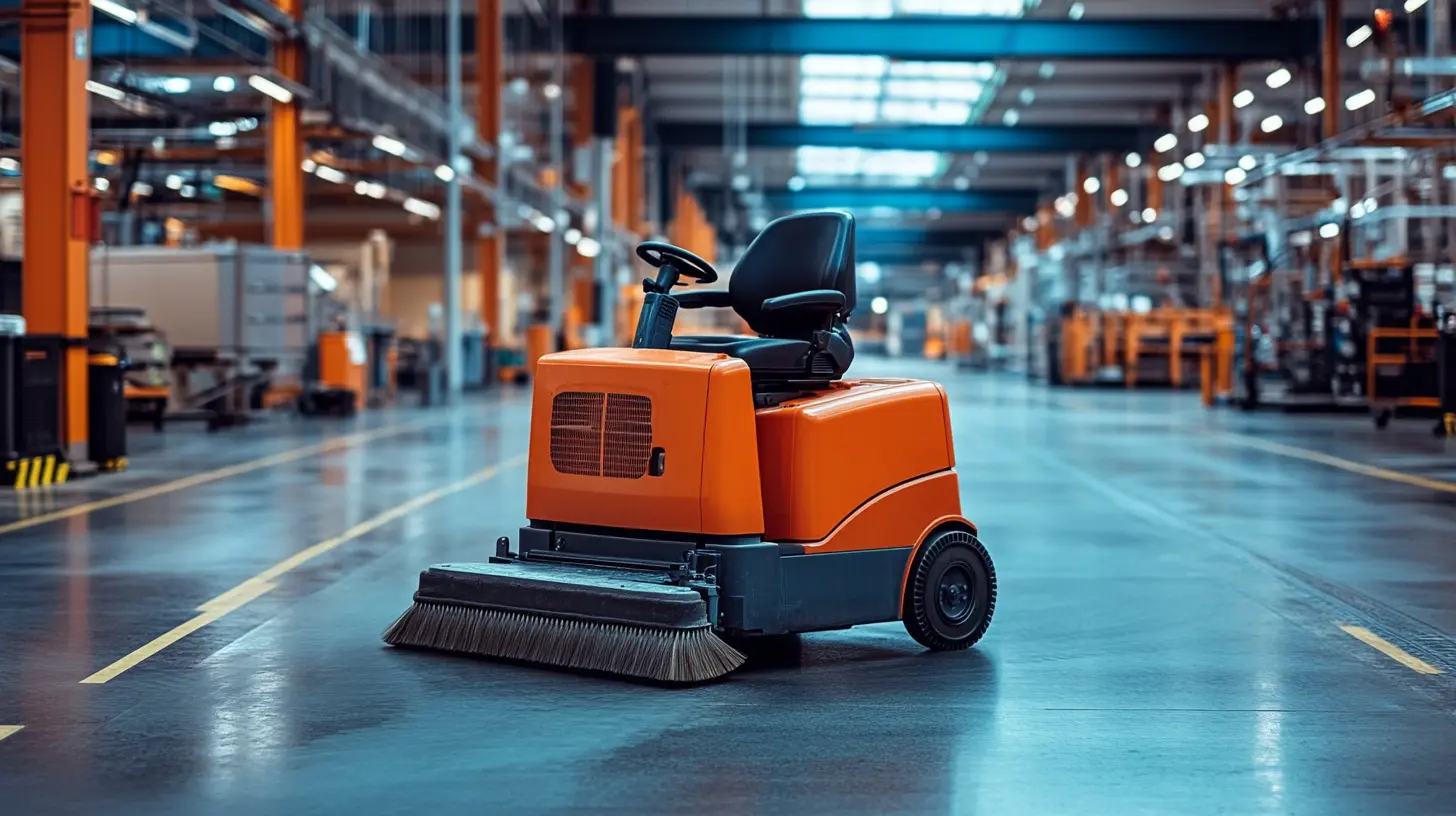
Sustainability trends are going to prove significantly determined to the evolution of vacuum sweepers as we theorize about them in 2025. Eco-friendly vacuum solutions have slowly become a key element in procurement strategies due to environmental awareness along with consumer pull for greener products. As stated in a Grand View Research report, eco-friendly vacuum cleaners worldwide are forecasted to grow by a CAGR of more than 9.5 percent from 2021 to 2028.
Sustainability considerations have become a strategic imperative, rather than just a trend for marketing. Increasingly, companies favor products based on energy-efficient technologies and materials with a minimal carbon footprint. A recent NAHB report states that 70 percent of consumers prefer products that support a sustainability argument. This shifts the purchasing paradigm; organizations are now choosing suppliers with green manufacturing processes more than ever.
With that, advanced technology used in vacuum sweepers has triggered the innovation saga toward improving performance concerning ecological sustainability. Battery-operated vacuum sweepers constructed with recyclable components are taking the scene. Research and Markets stated that the demand for smart and sustainable cleaning solutions will change the rules of competition, urging manufacturers to re-strategize product designs toward eco-friendly. As the future unfolds, incorporating sustainability into vacuum sweeper design and procurement will not just be pro-planet but will be key to tapping into the growing eco-conscious consumer sector.

Increased technological advancements over the years have resulted in a turnaround in the design of vacuum sweepers to meet the modern requirements of households and industries. Smart features integrated within vacuum sweepers have changed the paradigm of cleaning to be just a little more intelligent and convenient. They have become almost indispensable cleaning machines at the home because of such innovations as automated scheduling, real-time monitoring, and voice control, especially when thorough cleaning is practiced during Lunar New Year festivities.
Perhaps among the most exciting developments has been the emergence of machines that can fully autonomously navigate through a range of environments. These intelligent machines not only cut time usefully but also enhance the cleaning experience overall. This means advanced suction power with sophisticated navigation and vacuuming sensors able to target dirt and debris in the cleaning path to assure spotless cleaning with near-total independence from humans. This has become very enticing in urban cities, where the lifestyle requires some efficiencies.
Modern vacuum sweepers show an increasing trend toward health and hygiene, stressing technologies that rid surfaces of allergens and germs. Self-cleaning and disinfection at high temperatures contribute to a cleaner indoor atmosphere and healthier conditions, answering the heightened concern for cleanliness. The vacuum sweepers of tomorrow will incorporate even more advanced features once smart home integration goes mainstream, thus fitting more neatly into our day-to-day lives.
Market for vacuum cleaners today is changeless and heavily competed with technological advancements and evolving consumer behaviors. All the major market players have shifted their stand to meet the competition by applying continuing innovations in new product development. Robotic cleaners will dominate the market in terms of customer ratio and floor vacuum cleaner sales since their are used by modern households and provide much convenience. Indeed, the robotic vacuum cleaners' segments do remain affluential and are likely to report that by the year 2032, pool vacuum cleaners would still be 56% of the total market as the favorite cleaning devices in residential places. This trend seems to draw a very strong consumer inclination towards automated solutions intended to meet their household chores. Moreover, as the area is expanding for the household cleaning products market—projected to grow from $35.25 billion in 2022 to $55.05 billion by 2030—manufacturers are constantly innovating and upgrading their offerings.
To be responsive to the current market, large players are investing large amounts of resources into research and development in order to enhance the functionality and user experience of their vacuum products. As focus changes toward cleanliness and hygiene from consumers, the pressing need for sustainability and effectiveness has never been higher. The balance of innovation and affordability will therefore remain a mandate to be fulfilled by market leaders, looking to maintain their relevance amidst the changing competitive landscape in the vacuum cleaning appliance industry.
The evolution of global procurement will continue to warrant the greater emphasis on cost analysis, especially regarding vacuum sweepers. In recent times, the move to zero-based budgeting reforms has represented a turn toward greater fiscal efficiency, enabling procurement professionals to assign resources strategically. In the case of purchasing vacuum sweepers, consideration of cost versus quality directly impacts the overall efficiency of operations.
Research shows that the vacuum cleaner market will significantly expand so that by the year 2025, the estimated market size will exceed $18 billion, driven by technological advancements with consumers preferring eco-friendly and energy-efficient options. Such progress makes evaluation of suppliers crucial not only to assure good products but also the sustainability of procurement practices, in line with the broader government push towards local procurement, as in the recent initiatives in Australia.
Additionally, while money is already tight, organizations must adopt stringent performance management. This growing trend aims to enhance financial accountability and effective spending in sectors like cleaning equipment procurement, where indeed user choice is directed toward more-inclusive supplier partnerships. The market focus on "buying local" poses further difficulties; understanding consumer sentiment and perceived value will be crucial in undertaking such initiatives efficiently. While procurement managers will follow suit in positioning these agendas, balancing values for quality against cost will remain an active consideration in ensuring procurement success and sustainability in a very competitive environment.
Across the world, vacuum sweeper adoption and usage show great regional divergence, with such differences largely attributed to local economic situations, infrastructure development and environmental consciousness. A recent MarketsandMarkets report states that North America is expected to grow its vacuum sweeper market at a CAGR of 4.6% from 2020-2025. The consistent growth can be attributed mainly to the focus on urban cleanliness and the introduction of automation in cleaning practices within commercial settings.
On the contrary, the Asia-Pacific region is rapidly embracing vacuum sweepers, especially in emerging economies such as India and China. The report claims that this region will observe a commendable CAGR of 5.8%. This is being augmented by rapid urbanization and various government programs toward better sanitation standards. Further, smart city projects are fast developing and hence, require the efficient cleaning of cities to handle massive footfall traffic in urban areas.
In the case of Europe, with its stringent rules and regulations organized and targeted toward the area of environmental sustainability, one may infer an altogether different tendency. As described by an analysis given in the European Cleaning Journal, the spike in interest for eco-friendly types of vacuum sweepers made yet another 6% leap in market share. Manufacturers are actively pursuing the technologies of battery operation and noise reduction, in line with the commitment in Europe towards sustainability and in an effort to reduce noise pollution in urban spaces.
These regional insights reveal how different economic, environmental, and urban planning factors affect the development and acceptance of vacuum sweepers across the world. Different markets present different preferences but also present the trends that will go either way in the larger cleaning industry in procurement and technology.
To be competitive in the changing vacuum sweeper market, knowledge of customer likes is paramount for manufacturers and suppliers. The current buyer is demanding more multifunctional models for different cleaning tasks. Demand for machines that can clean any surface-from hard floor to carpet-has increased, inspiring manufacturers to innovate and introduce advanced technologies to their designs.
In addition, eco-friendliness has become a critical factor for many consumers. With rising awareness of environmental issues, customers prefer vacuum sweepers that are energy-efficient and made of sustainable materials. This is a trend that brands are driving by promoting their green credentials and offering products that perform well while minimizing ecological impacts.
Ease of use and convenience have also become the top-most priority among buyers. Lightweight designs, ergonomic handles, and advanced filtration systems are features high on the wish list. Consumers value products that make cleaning easier for them; for example, the automatic functionality of certain vacuum models with smartphones' smart technology and remote operation via a mobile app. While the demand for vacuum sweepers keeps increasing, to survive in a 2025 environment, businesses will have to gear their offerings toward the stated orientations of customers.
Recent trends influencing global procurement include the increasing demand for innovative technologies, especially in sectors like minimally invasive surgery and retail, as businesses aim to enhance operational efficiency and meet changing consumer preferences.
The minimally invasive surgery market is driving procurement teams to align with suppliers who deliver cutting-edge medical devices and equipment, as healthcare providers prioritize precision and patient comfort.
Retailers are transforming their procurement strategies to improve direct consumer engagement, requiring a deep understanding of consumer behavior and close collaborations with manufacturers and distributors.
BPO allows companies to streamline procurement functions by outsourcing non-core activities, enabling them to focus on strategic sourcing and remain competitive in a changing market.
Vacuum sweepers have integrated smart features like automated scheduling, real-time monitoring, and voice-activated controls, enhancing cleaning efficiency and user experience.
Modern vacuum sweepers include technologies that eliminate allergens and germs, such as high-temperature disinfection and self-cleaning functions, contributing to a cleaner and healthier indoor environment.
Robots in vacuum sweepers autonomously navigate environments, saving time and effectively tackling dirt and debris, which is especially attractive in urban settings with busy lifestyles.
As smart home integration becomes more common, future vacuum sweepers will likely include even more sophisticated features that seamlessly fit into daily routines.
Agility in sourcing is crucial for retailers to quickly adapt to consumer demands and preferences, ensuring they remain competitive in capturing market share.
The shift towards innovative solutions in global procurement is essential for companies to navigate market drivers effectively and enhance their procurement strategies in a rapidly evolving business landscape.
